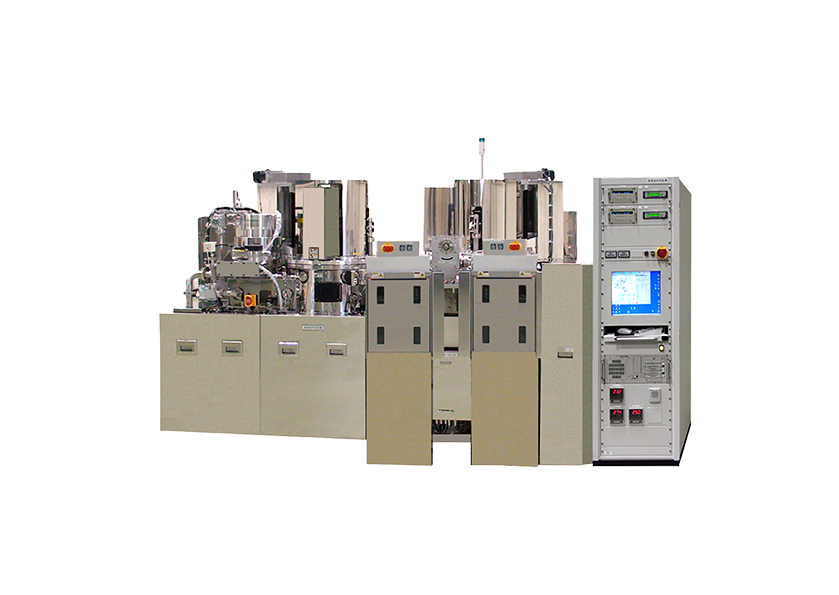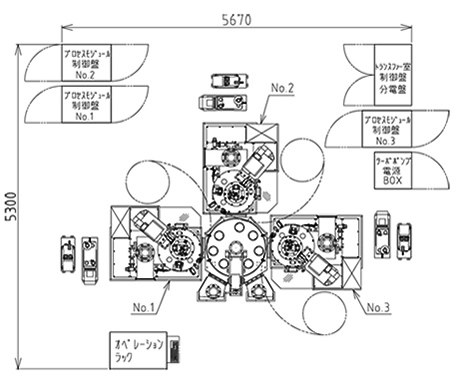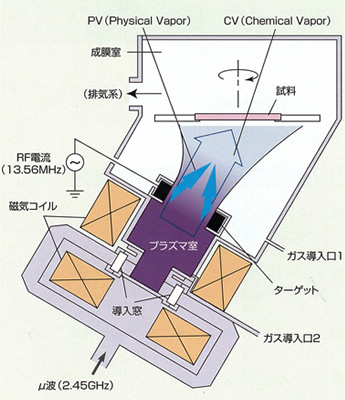Products
Multi-Layer Deposition System for Manufacture
AFTEX-9000series
Solid-source ECR plasma deposition system that makes it possible to form multi-layer films from a large number of materials
- Low temperature process
- High refractive index control
- High-speed reactive film formation
- Condensation / flat film
More than 100 Solid Source ECR Plasma Deposition Systems has been introduced into production lines since they can form high-quality nano-thick thin films at low temperature and with low damage. Equipments of AFTEX-9000 family for max. 200mmφsamples can be equipped with up to three ECR plasma sources allowing simultaneous film deposition using all of them, which realize extremely high throughput.
- Deposition Characteristics
- Product Features
- Standard Specification
- Principles and Features of ECR Plasma Deposition
Large variation of materials and layers
Various oxides and nitrides can be deposited by using various target materials and the safety gases, such as argon, oxygen, and nitrogen.
Controllability of refractive index
The solid source (target) and the dry gases, such as oxygen and nitrogen provide a high controllability for refractive index of the films.
Deposition chemistry
The ECR plasma stream promotes a high reactivity between the materials from the target and the safety gases, providing high-speed reactive sputtering deposition.
Low temperature, less damage, surface treatment
The ion energies (10-30 eV) in the ECR plasma stream present a high-quality and less-damage deposition. Cleaning or ultra-thin oxide/nitride film deposition is available by using ECR-plasma-stream irradiation on the sample surface.
- Automatic carrier system with 200 mmφ samples, 3 ECR plasma deposition room (max.)
- High throughput by simultaneous deposition with the 3 ECR sources
- By setting recipes, desired multilayer is automatically produced.
- Sample rotation and inclined ECR-source installation provide excellent uniformity and coverage.
- Option:Spectrometer to measure film thickness and refractive index (NEW)
- Need no waste gas processing system by using the solid source (target) and safety gases, such as argon, oxygen, and nitrogen.
| Items | Specification |
|---|---|
| Residual gas pressure | Process room: <3E-5 Pa, Transfer room: <9E-5 Pa Load-lock room: <3E-4 Pa |
| Evacuation system | Process room Turbo-molecular pump: 1300 l/s Rotary pump: 500 l/min Transfer room Turbo-molecular pump: 450 l/s Rotary pump: 250 l/min Load-lock room Turbo-molecular pump: 450 l/s Rotary pump: 250 l/min |
| Load-lock room | Automatic open/close door Casette: 12 samples Sample detection system |
| Transfer room | Robot arm system Sample detection system Face-down carrier Additional small room (option): max. 2 units |
| Deposition room | |
| Available room number | Max. 3 units |
| Substrate size | Max. 200mmφ |
| Substrate holder | Rotation and up/down mechanism Temporary cradle mechanism |
| Deposition | Upward |
| Substrate heating | Max.300℃ |
| ECR source | |
| Quantity | 1 unit for each deposition room |
| Type | Microwave introduction method coupled with divided microwaves |
| Plasma chamber | Inclined installation |
| Target | Cylindrical target Inner diameter: 125mm |
| Gas system | 3 lines, controlled by mass-flow controllers for each deposition room Gaseous species: Ar, O2, N2 |
| Operation | Automatic evacuation, carrying, and deposition by recipes |
| Controller | Microwave source:2.45GHz, 1kW, 1unit Microwave auto-tuner Magnet coil power supply:DC 1.5kW, 2units Sputtering power source:13.56MHz, 1kW, 1unit RF auto-matching controller Computer and sequencer |
| Utilities | |
| Foot print | 7x6m (including working space) |
| Electric power | 3φ200V, 75A, max.4 lines |
| Cooling water flow | 20 l/min (room temp.), 0.3-0.4 MPa (inlet), max. 3 lines |
| Weight | About 7000kg |
ECR Principle
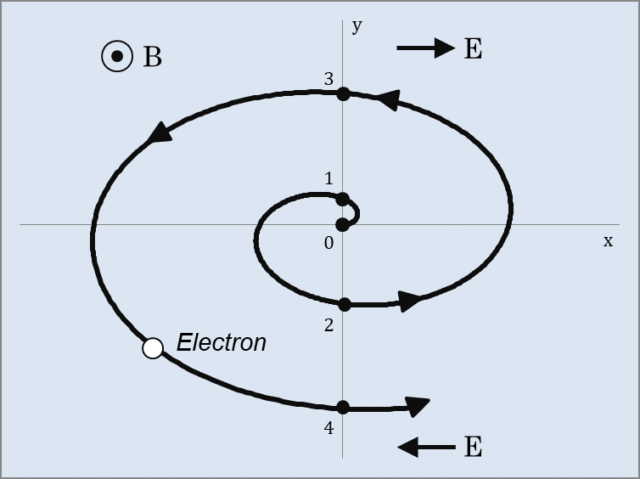
High refractive index control
- No electrical power, low gas pressure (0.01-0.2 Pa), large-current ion bombardment effect at low energies (10-30 eV) to a high-density (5-10 mA/cm²) substrate surface
- Formation of precise, smooth, high-quality thin films, with low heating and low damage
Physical properties of ECR thin films
Flatness
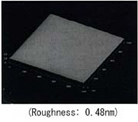
Hardness
SiN films and carbon films have hardnesses similar to those of diamondStrictness

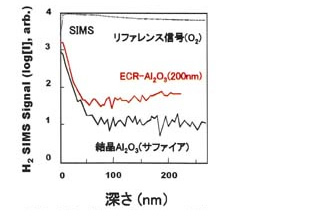
Superior optical characteristics

Impurity-free
High-purity target and gas used as ingredients to achieve high levels of purity with no reaction products (H, F, CI, etc.)High compoundability
Orientation of AIN films, MgO films, etc. Low-resistivity TiN films and α-Ta films.Coatability
Coatability of bumps is much higher than with general sputtering, by formation of inclined rotation film at low gas pressure and high ionization rate.High voltages
High-voltage insulation film similar to bulk. 10 MV/cm for SiO2 and Al2O3 films (similar to 1000°C thermal oxidation film).Low damage

High permittivity
Formation of boundary oxide films inhibited by metal-mode depositionDrawing & Diagram
Contact Us
TEL 045-787-7203 / FAX 045-787-8472
Please feel free to contact us, you can reach us with phone or thru contact form here.


